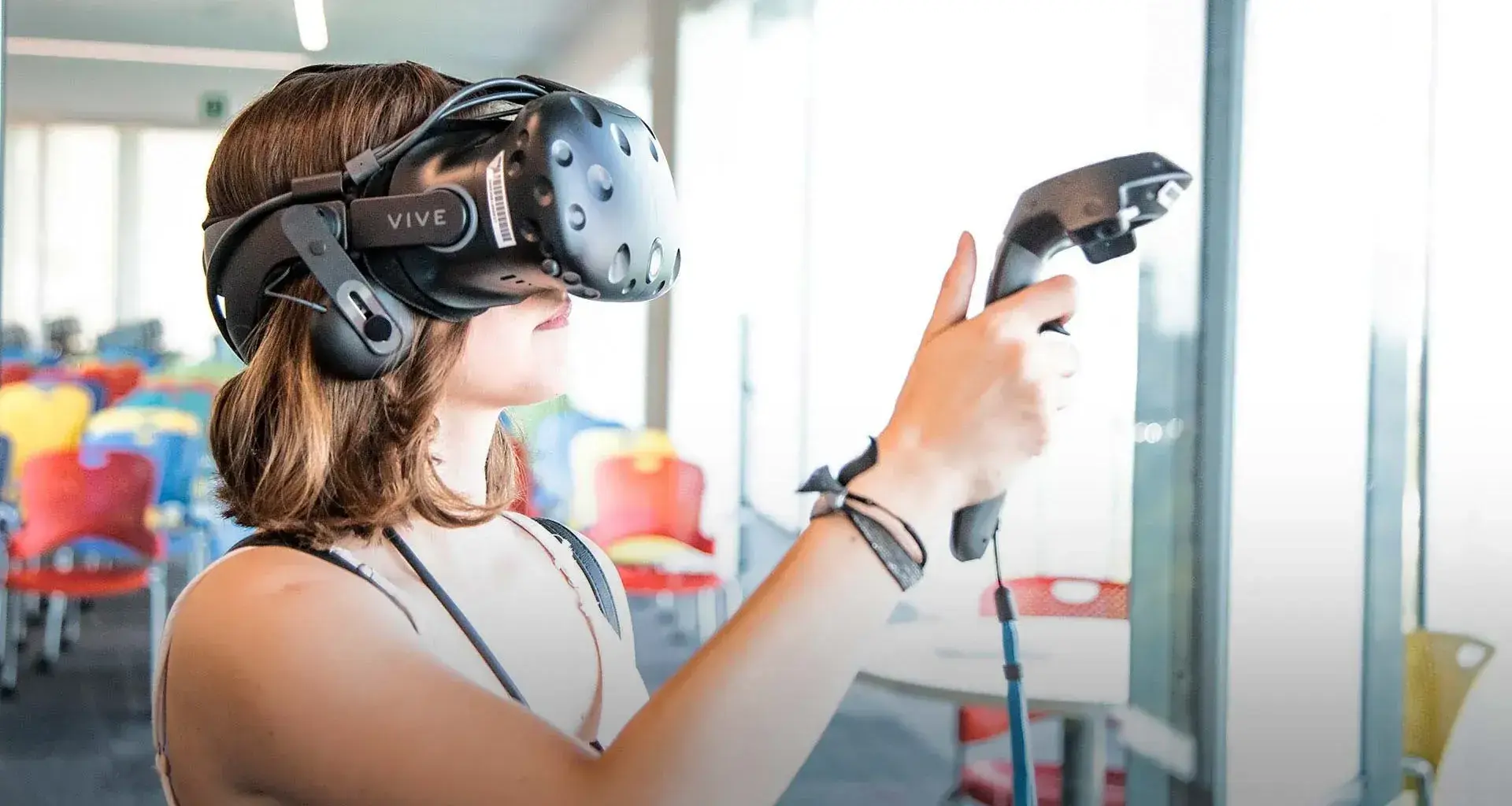The technological applications proposed by the Tec21 Educational Model include opening seven virtual reality immersion spaces known as VR Zones on different campuses.
In these zones, students can see the human body in 3D, study the architecture and design of cities without having to visit them, and build molecules outside the laboratory.
They can also attend whole lessons where teachers and students are immersed in a virtual world.

At the opening ceremony, David Garza, Rector of Tec de Monterrey, expressed his view that these VR Zones represented progress in information services and resources that will positively impact student learning.
“This goes very much in line with what we promote at the Tecnológico de Monterrey: educational innovation. We’ve started with the Tec21 Educational Model and these are elements that bring added value to the benefit of all of our students,” said the rector.
A video link of the ribbon-cutting ceremony was broadcast showing the directors of the different campuses now possessing VR spaces simultaneously cutting the ribbon.
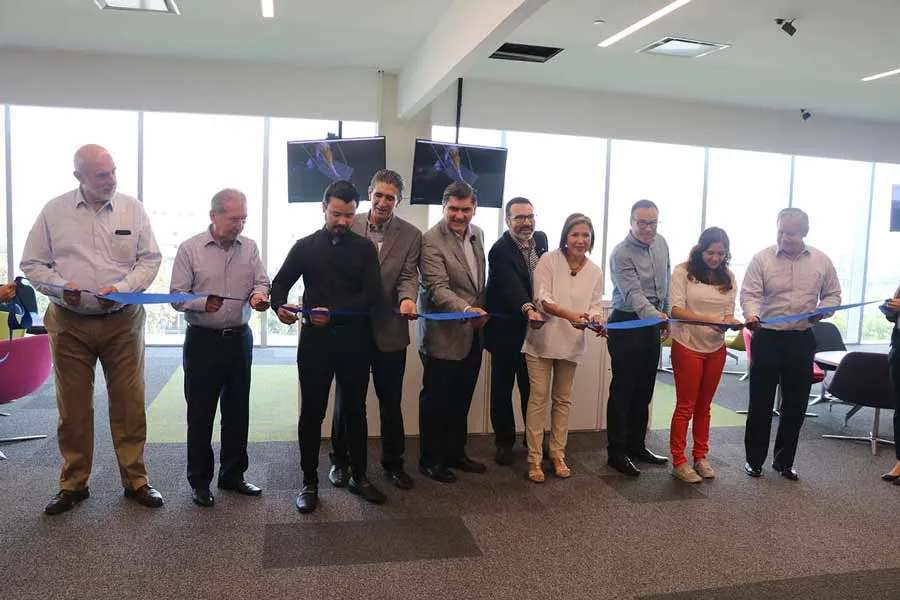
Joaquín Guerra, academic vice-rector of Educational Innovation told CONECTA that the Tec currently possesses 32 virtual reality stations distributed throughout these spaces.
“Revolutionizing education requires us to take advantage of the most advanced educational technologies to create a memorable learning experience for our students.
We’re sure that VR Zones will be of great help in taking the education of the professionals of tomorrow one step beyond current practices”, he enthused.
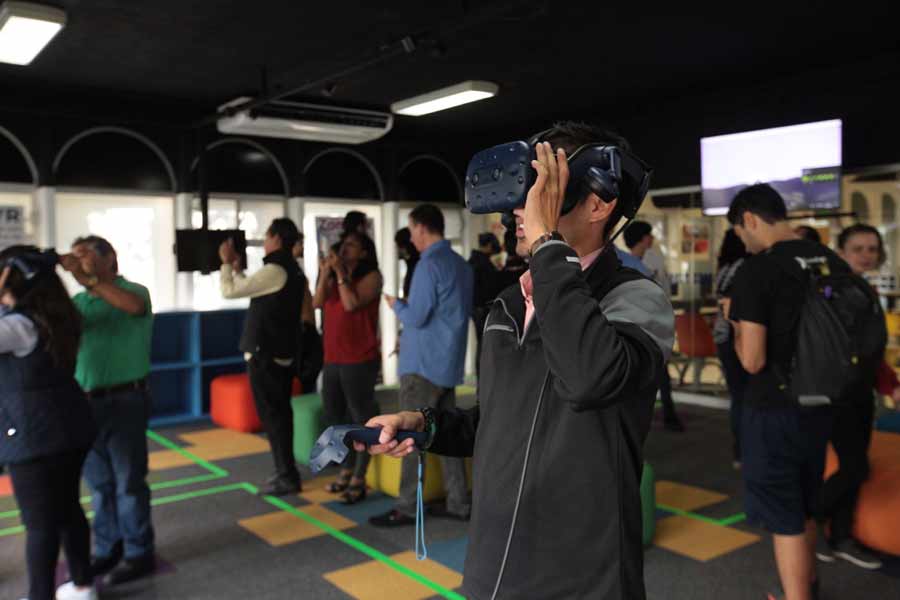
WHAT DOES IT CONSIST OF?
Virtual reality spaces house stations comprising a computer (VR Ready PC), a virtual reality headset with headphones and 2 motion-sensitive controllers.
These spaces are available to all Tec students as self-access or for activities on their syllabuses.
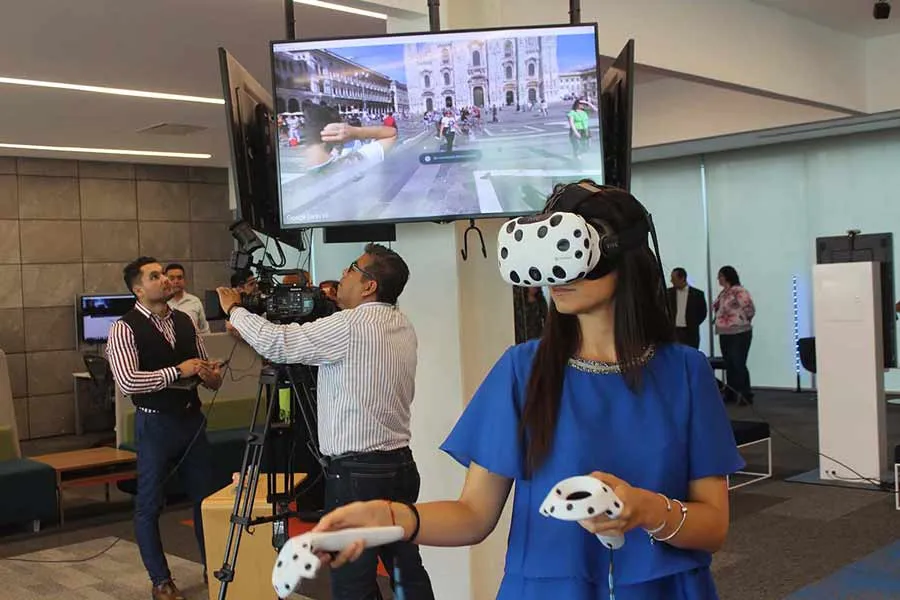
WHAT’S IT USED FOR?
Students will be able to do the activities designed by their teachers as one of the challenges of the Tec21 Model, learn about a topic, or cram for an exam.

HOW DOES IT WORK?
Every station will have a computer (VR Ready PC ), a virtual reality headset with headphones and 2 motion-sensitive controllers.
Stations also have a 55-inch monitor raised 1.8 meters off the ground, making it possible for as many as 5 students to use it at the same time, and an interactive screen with menus, tutorials and links to resolve any concerns that may arise.
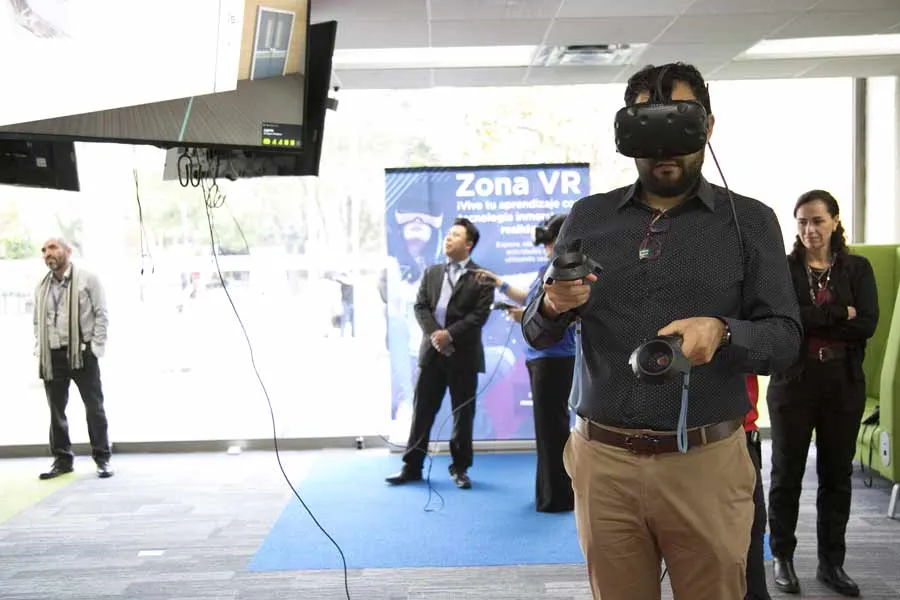
WHERE WILL THEY BE?
The VR Zones will be located on the following campuses: Monterrey, Guadalajara, Puebla, Querétaro, Mexico City, State of Mexico and Santa Fe.
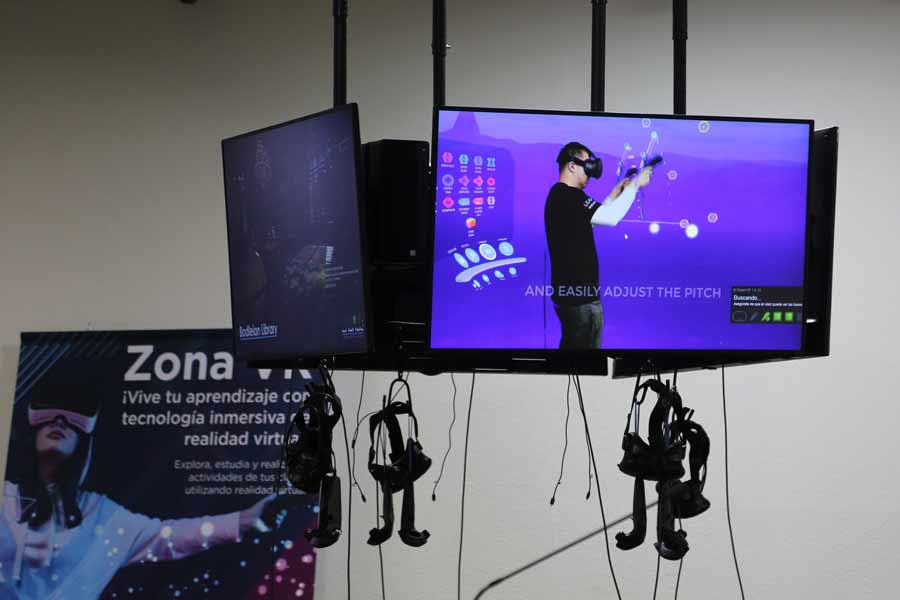
HOW DO YOU USE IT?
To use one of stations in a VR Zone, students should register on the website for Mostla, the emerging educational technologies lab, and reserve their place online.
When they check in, there will be a catalog in the viewer containing all the available virtual reality applications.
A plus: when students search through the library catalog for a topic, they will find virtual reality application recommendations, in addition to book suggestions
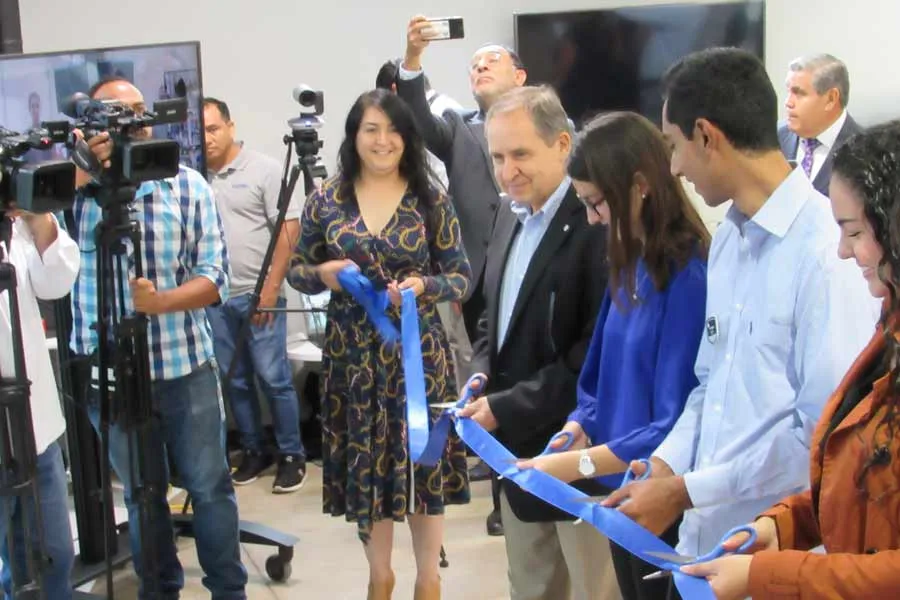
BY THE NUMBERS
- 7 Tec campuses have VR Zones
- These spaces contain 32 virtual reality stations.
- 47 virtual reality applications are available across different disciplines
- 20 thousand students will have access to this immersion technology to further their studies
- 500 teachers have designed learning activities.
YOU’LL SURELY WANT TO READ THIS TOO:

